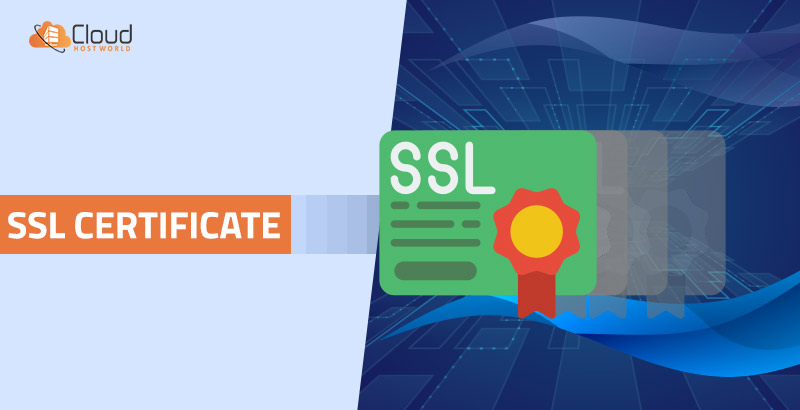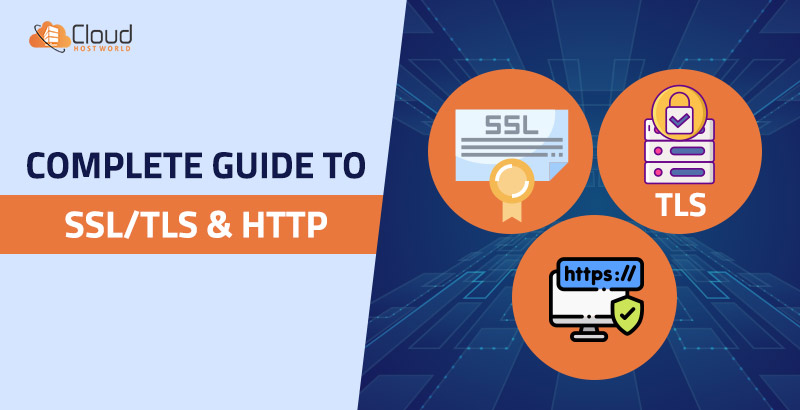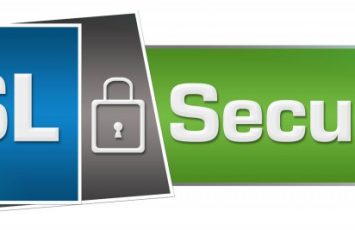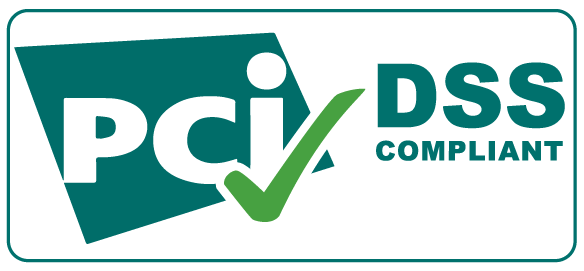Complete Guide to SSL/TLS and HTTP
Internet security is becoming very critical in this age of technical advancements, so ” An Complete Guide to SSL/TLS and HTTP” is being introduced.
Irrespective of the scale of your business, you must opt for internet security in much the same way big companies and residential societies employ physical security.
It not only makes you feel safer, but at the same time, it protects your most confidential information’s and your visitors; whenever they visit your website.
In case of technology, it is not always, easy to stay updated about the latest software updates, although it should be a part of daily practice.
For this reason only, many big businesses collaborate with leading internet security providers in the market. There are quite a few terminologies and technologies related to internet security.
Moreover, here we will have a good look at them and try to understand them as simply as possible.
Before we head off to internet security and the technologies related to it, let us first understand these terminologies that will come up time and again.
- Encryption : It is the process of “scrambling” the original information into a meaningless and unrecognizable form. In this way, the information is transmitted safely to the intended person. The receiver can only read the original information after he or she has decoded the form.
- Decryption : This is the opposite of Encryption; i.e. the process of “unscrambling” the already encrypted information that was transmitted. The receiver needs to have the means of decrypting the massage or the key.
- Key : Key or an algorithm is a mathematical formula that helps to encrypt a massage sent over the internet or decrypting it. Just as a lock with different combinations is hard to break, a key with a complex and longer encryption is tough to crack. Depending on its use and accessibility there are different types of keys.
- Browser : A browser is a software program or “engine” that you can use to access and browse (or search relevant information) on the internet. Most popular search engines are Microsoft Internet Explorer, Google Chrome, Mozilla Firefox, etc.
What is SSL/TLS and HTTP
When it comes to internet and its security, the three most widely used seen acronyms are SSL/TLS and HTTP. They seem almost interchangeable but they are not quite so.
The SSL/TLS Certificate
SSL stands for Secure Socket Layer. It is the standard technology employed for securing and safeguarding information transfer between two parties or servers.
This helps to prevent hackers and cyber-thieves from intercepting, accessing, stealing and modifying the information between transfers by creating a secure communication link between the two servers. Every form of information can be sent via a secure link.
An SSL certificate is nothing about a digital computer file (or maybe a small piece of code) with two major functions.
- Authentication and Verification→An SSL certificate contains various informations about the website owner. This information is visible to the visitor and they know that the website is genuine and not a fake. The green padlock beside the URL assures that the website is authenticated and valid.
2. Data Encryption→ It is the most important function of the SSL certificate. By encrypting the information with a key, the information on the website becomes hard for cyber-criminals to access or intercept.
The SSL certificate is issued by a trusted Certificating Authority (CA). They employ quite strict rules of eligibility for an SSL certificate.
TLS stands for Transport Layer Security and is an updated and more secure version of SSL. Even though people still refer to their security certificate as SSL, the SSL has now become almost obsolete with TLS taking its place. A TLS has both the above functions only it is much more efficient.
Hyper Text Transfer Protocol is the full form of the acronym HTTP. As the name suggests it is a protocol used in the World Wide Web, to initiate communication between web servers and clients (browsers). It defines the formatting and transition, of massages, as well as the actions, the browsers and servers must undertake in response to various commands.
Whenever a user enters an URL in the browser, it sends a HTTP command or request to the web server and directs it to fetch and transmit the intended web page. There is another protocol that controls how the www works; namely the formatting and display of web pages.
HTTPS is a secured extension of HTTP, namely Hyper Text Transfer Protocol Secure. It appears in the address bar before the URL if and only if that website is SSL certified. The lock symbol beside it displays the identity of the website and its owner (business or personal).
As you can see, SSL and HTTP goes hand-in-hand. This means that you cannot use one without the other; whenever you set up an SSL certificate, it means that you are configuring your website to transmit data using HTTPS and the URL is preceded by HTTPS; otherwise, it remains as HTTP.
Why is a SSL Certificate necessary ?

Wherever and whenever, sensitive information such as login credentials, payment informations like bank account number, etc. are transferred; there is an absolute need for security.
It does not need to be said much. It is to be kept in mind that even if we say SSL, we must mean TLS as the former has been replaced by the later. However, here I will continue with SSL as it is still commonly used.
The main goal of a SSL/TLS certificate is to make sure that the information transmitted must is only accessible between the sender and receiver and no third party unless any one of them decides to share.
Once the information leaves the sender’s system it bounces off many devices on the internet before it lands on the indented receiver’s system. There is always a chance that it may get intercepted with malicious intent.
This is the reason why SSL exists and is necessary to have on your arsenal as it secures a communication link between the two parties and blocks everyone who should not get access to the information.
SSL Explored
We have seen what exactly an SSL certificate means and why it is necessary to have one. Now we will discuss how it works, how many different types of SSL there are, what benefits they bring and more.
How does it work ?
An SSL encryption or certificate works in the same way as a lock and key works. You need the correct key to open the lock; similarly, you need the correct encryption algorithm to decode the information. For each SSL session, two keys are used.
- A Public Key → used to encrypt or scramble the information.
- A Private Key → used to decrypt or unscramble the already coded information and restore the original information.
Together, these two keys create an inimitable session key that is unique to each session.
To issue a SSL certificate for a CA-verified entity means to issue it for a website server & domain pair.
Whenever an user enters the domain name of an SSL certified website, a connection or “SSL Handshake” occurs between the two parties and two keys mentioned above, which will be used to create a session key that will eventually be used to encrypt and decrypt the transferred data.
One can always notice the change in the UI to indicate that a secure connection has been established between the two parties. At first, the information is requested and the session key is created to encrypt the information before transferring it.
The information is then transmitted from the source (server) and reaches its destination (browser) after bouncing off numerous devices. Finally, on reaching its destination.
The session key is used once again to decrypt the encoded information and restore it to its original form so that the user can view the information requested. This session key is valid for that particular session only.
When and where to use?
The shortest answer to this would be “whenever and wherever you need to transfer any sensitive data between the server and domain.” However, there are other cases where it comes handy as well. Here we will see the cases where SSL certificate is absolutely necessary as well as useful.
A. Securing information transfer
As I have said earlier, the most important function of the SSL certificate is to secure sensitive information between two parties. However information’s security does not only include that; there are other cases too here information needs to be secured:
Between your website and the client’s browser.
Internal communication on corporate intranet.
Email communications sent back and forth your network.
B. When you need authentication for your server
It is not a big task nowadays to imitate a server itself. With an SSL certificate, you can verify your id and authenticity of your server.
C. To build trust
Say you are running an e-commerce portal. Most of your communications with the clients will be via the internet and you would need to ask them for informations that may be sensitive to them.
In such cases, a sense of trust is very important and an SSL certificate can help you to put good faith between you and your client.
D. To comply with industrial standards
If you are involved in the finance or payment card industry (PCI), there are some standard guidelines you need to abide by most prominent of which is to maintain a base level security. An SSL certificate can help you a great deal in this regard.
CONCLUSION
In the world of online business and e-commerce, trust makes all the difference. For any online enterprise or e-commerce website host, investing in technology to secure client data and requisites and build up trust with them is a very critical success factor.So our ” Complete Guide to SSL/TLS and HTTP” will definately help you out.
SSL certificates and trust marks are tools that help businesses in the endeavour. They are very effective and an absolute requirement for security reasons. Hope this article has been helpful to you.






 India
India USA
USA UAE
UAE
